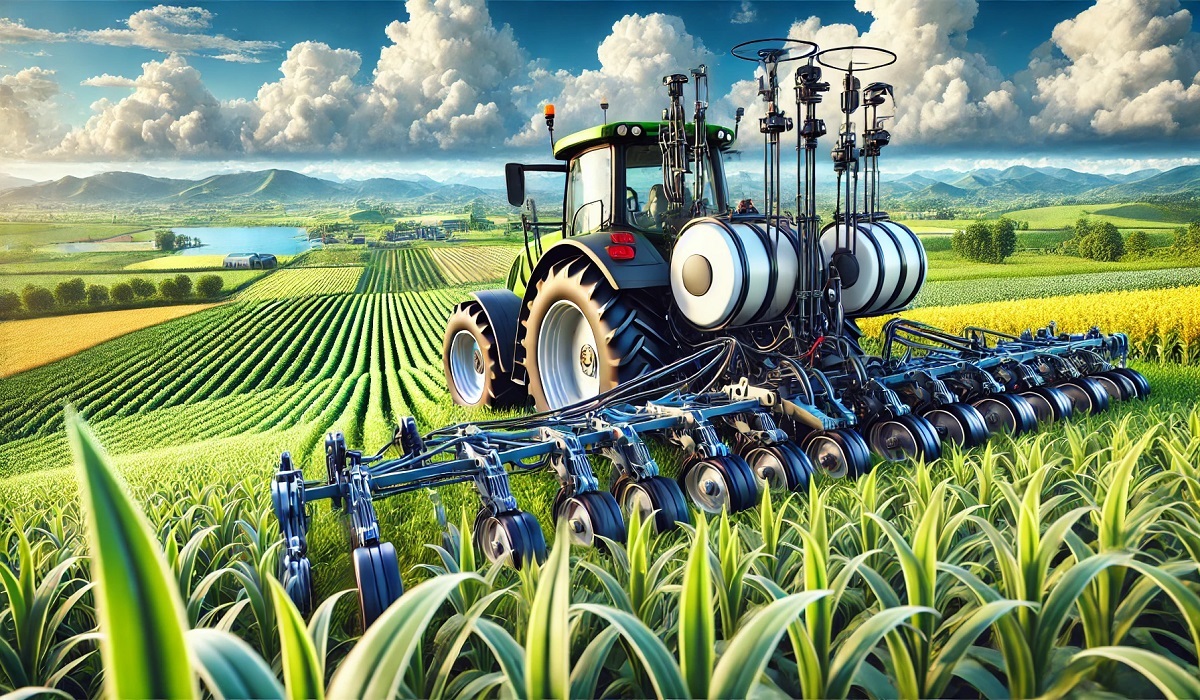GUIDE
Rears – Everything You Need to Know

Rears play a vital role across multiple industries, from automotive mechanics to agricultural tools and machinery. Whether you’re an automotive enthusiast, a farmer, or someone curious about industrial equipment, understanding the significance of rears can provide valuable insight. This guide covers the types, applications, and maintenance of rears, ensuring you’re well-informed.
What Are Rears?
Rears, in simple terms, refer to the rear parts or components of various machines, vehicles, and equipment. They are critical for ensuring balance, power transfer, and operational efficiency.
From rear axles in vehicles to the rear sections of farming equipment, these components serve both structural and functional purposes. Depending on the context, “rears” could involve:
- Rear-wheel mechanisms in cars or bikes.
- Rear attachments for farming equipment like sprayers or harvesters.
- Rear sections of industrial machines for balancing or operational output.
Their versatility and utility make them indispensable across industries.
Types of Rears Across Industries
Understanding the types of rears helps identify their applications. Below is a breakdown of the common categories:
1. Automotive Rears
Rears in vehicles primarily refer to rear axles, differential gears, and suspension systems. Key functions include:
- Distributing power to rear wheels in rear-wheel-drive vehicles.
- Supporting vehicle weight through suspension systems.
- Providing stability while cornering.
2. Agricultural Equipment Rears
In farming machinery, rears refer to attachments or components mounted at the back of tractors or harvesters. Examples include:
- Sprayers: Rear-mounted for even distribution of chemicals.
- Plows: Attached to the rear for soil preparation.
- Harvesters: Rear storage compartments for crop collection.
3. Industrial Rears
Heavy-duty machines use rear components to balance loads or drive operations. Examples include:
- Rear-mounted forklifts for counterbalancing.
- Rear panels for access to internal machinery.
Applications of Rears in Everyday Life
The functionality of rears extends across various sectors:
- Transportation: Rears in vehicles aid in power distribution and support suspension systems.
- Agriculture: Farming equipment with rear attachments improves efficiency and reduces manual labor.
- Manufacturing: Industrial machines with rear counterweights ensure stability during heavy operations.
- Sports: Rear-wheel bicycles or motorbikes enhance performance in specific terrains.
How to Maintain Rears for Longevity
Maintaining rears, whether in vehicles or machinery, is essential for optimal performance and safety. Below are actionable tips for proper care:
General Maintenance Tips
- Regular Inspections: Check for wear and tear on rear axles, attachments, or mechanisms.
- Lubrication: Apply grease or oil to moving parts to reduce friction.
- Cleaning: Remove debris or buildup that could interfere with rear components.
- Alignment Checks: Ensure proper alignment of rear wheels or attachments.
Specific to Automotive Rears
- Monitor Suspension Systems: Damaged suspension can affect the rear axle’s functionality.
- Inspect Rear Differential Gears: Look for unusual noises or leaks from the rear differential.
Specific to Agricultural Rears
- Tighten Bolts: Ensure rear-mounted attachments like sprayers or plows are securely fastened.
- Rust Prevention: Store equipment in dry conditions to prevent rust on rear components.
Common Issues Faced with Rears
Despite their durability, rears can face problems if not maintained properly. Some common issues include:
- Wear and Tear: Prolonged use without maintenance can lead to deterioration.
- Misalignment: Rear wheels or attachments not properly aligned reduce efficiency.
- Rust and Corrosion: Outdoor exposure can lead to rusting of rear components.
- Overloading: Exceeding the weight limit can damage rear-mounted equipment or vehicle axles.
Advantages of Well-Maintained Rears
A properly maintained rear system ensures:
- Enhanced Performance: Rears in optimal condition improve the efficiency of vehicles and machinery.
- Reduced Downtime: Regular maintenance prevents unexpected breakdowns.
- Cost Savings: Timely repairs save money on replacements.
- Safety: Functional rears reduce the risk of accidents caused by mechanical failure.
How to Choose the Right Rear Component?
Selecting the right rear part for your vehicle or equipment involves considering the following factors:
- Compatibility: Ensure the rear component matches the model and specifications of your vehicle or machinery.
- Quality: Invest in high-quality materials for durability.
- Functionality: Choose rears designed to meet your specific requirements, such as power transfer or load support.
- Brand Reputation: Opt for trusted brands with proven reliability.
Checklist for Maintaining Rears
Use this checklist to ensure proper upkeep of rears:
- Inspect for visible damage weekly.
- Lubricate moving parts every month.
- Clean rear components after exposure to dirt or chemicals.
- Align rear wheels or attachments every six months.
- Replace worn-out parts promptly.
Advantages of Rear Attachments in Agriculture
Rear-mounted equipment in farming offers numerous benefits:
- Increased Efficiency: Machines with rear attachments reduce manual labor.
- Versatility: Multiple tools can be swapped for different farming tasks.
- Cost-Effectiveness: Rear-mounted tools improve productivity, lowering overall costs.
Conclusion
Understanding the importance of rears, their maintenance, and their applications across industries can make a significant difference in performance and efficiency. Whether you’re managing a vehicle, agricultural machinery, or industrial equipment, keeping rear components in top condition ensures safety, productivity, and cost-effectiveness. By following the tips and guidelines in this article, you can maximize the lifespan of your rear components and keep your operations running smoothly.
FAQs
What are the common types of rear attachments for farming equipment?
Common rear attachments include sprayers, plows, harvesters, and balers.
How can I prevent rust on rear components?
Store equipment in dry spaces, apply protective coatings, and clean regularly to avoid rust.
What are the signs of a damaged rear axle in vehicles?
Unusual noises, difficulty turning, or uneven tire wear may indicate a damaged rear axle.
How often should rear differentials be serviced?
Rear differentials should be checked during regular vehicle maintenance or at least once a year.
Are rear attachments compatible with all tractors?
Not always. Ensure compatibility by consulting your tractor’s specifications or manufacturer guidelines.
Can rear components be repaired or must they always be replaced?
Minor damage can often be repaired, but severely worn or broken components should be replaced to ensure safety.

 BUSINESS8 months ago
BUSINESS8 months agoService Top: Understanding Role, Dynamics, and Consent in Relationships

 TECHNOLOGY7 months ago
TECHNOLOGY7 months agoSSIS 858: Everything You Need to Know

 GUIDE6 months ago
GUIDE6 months agoLookmovie2.to Legit: A Detailed Review of Safety and Features

 FASHION8 months ago
FASHION8 months agoDIY Tips to Customize Your Orange Prom Dress and Stand Out

 GUIDE7 months ago
GUIDE7 months agoTokybook: Your Gateway to the World of Audiobooks

 TECHNOLOGY7 months ago
TECHNOLOGY7 months agoUnderstanding Libgen: The Ultimate Free Ebook Library

 GUIDE8 months ago
GUIDE8 months agoLeague of Graphs: The Ultimate Guide to League of Legends Stats and Analysis

 GUIDE7 months ago
GUIDE7 months agoLook at All Those Chickens: The Story Behind the Viral Meme
















